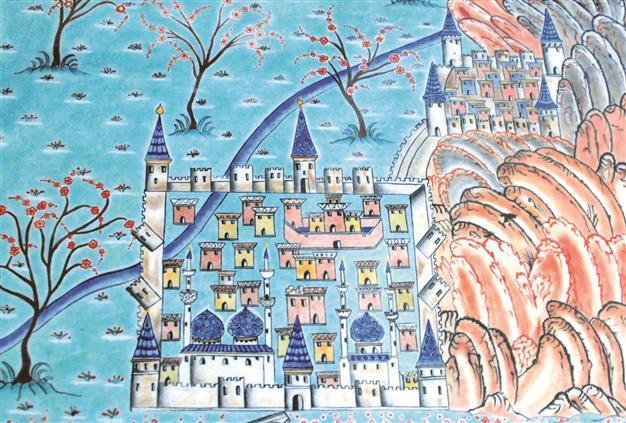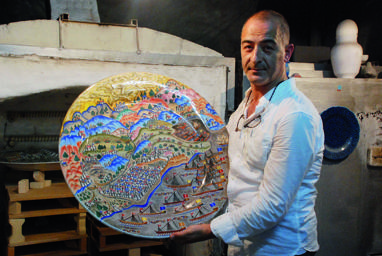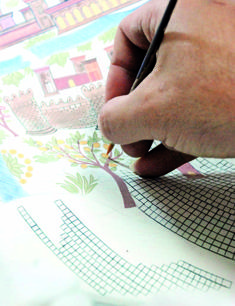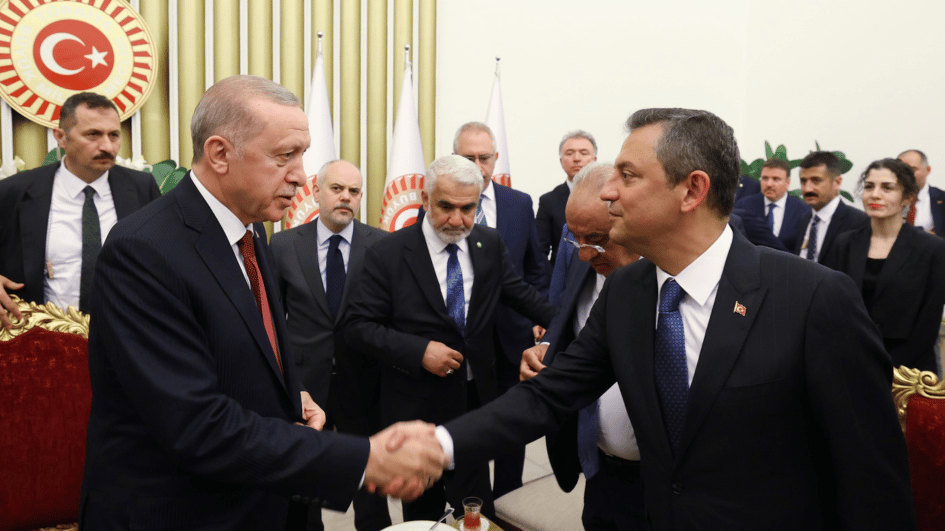Miniatures by Matrakçı Nasuh in tile collection
KÜTAHYA - Anadolu Agency
 On the 450th anniversary of his death, one of the most important statesmen in the era of the Ottoman Sultan Kanuni Sultan Süleyman, Matrakçı Nasuh is being remembered. UNESCO has also added him to its 2014 agenda to commemorate him throughout the year. As well as being a mathematician, miniature master and the inventor of the game “matrak,” Matrakçı Nasuh is also described as one of the most talented swordsmen in history.
On the 450th anniversary of his death, one of the most important statesmen in the era of the Ottoman Sultan Kanuni Sultan Süleyman, Matrakçı Nasuh is being remembered. UNESCO has also added him to its 2014 agenda to commemorate him throughout the year. As well as being a mathematician, miniature master and the inventor of the game “matrak,” Matrakçı Nasuh is also described as one of the most talented swordsmen in history.A tile master living in the western province of Kütahya, Fahri Çetinkaya has created a collection by processing some of Matrakçı Nasuh’s miniature works onto tile. Working as a tile artist since 1982, Çetinkaya said he had also created a collection last year by processing the world map by Ottoman cartographer Piri Reis onto 59 pieces of tile, and some of those tiles were selected by the Culture and Tourism Ministry for display on museum.
 He said after Piri Reis, he had worked on the miniatures of Matrakçı Nasuh, and continued: “Matrakçı Nasuh was a very significant miniature artist at the time of Kanu Sultan Süleyman. When the sultan went to the Iraqi expedition, Nasuh painted the places he had passed. He also painted cities like Baghdad, Tabriz, Karbala and Aleppo. Our collection is made up of 19 pieces. They are floor tiles, vases, plates and bowls in various sizes. I also added mosaics to the collection. We plan to display them during the events held for the Year of Matrakçı Nasuh, to be organized by the Culture and Tourism Ministry,” he said.
He said after Piri Reis, he had worked on the miniatures of Matrakçı Nasuh, and continued: “Matrakçı Nasuh was a very significant miniature artist at the time of Kanu Sultan Süleyman. When the sultan went to the Iraqi expedition, Nasuh painted the places he had passed. He also painted cities like Baghdad, Tabriz, Karbala and Aleppo. Our collection is made up of 19 pieces. They are floor tiles, vases, plates and bowls in various sizes. I also added mosaics to the collection. We plan to display them during the events held for the Year of Matrakçı Nasuh, to be organized by the Culture and Tourism Ministry,” he said. Speaking about the features of his works, Çetinkaya said he painted Nasuh’s maps and miniatures on tiles and plates, and integrated them with mosaics.
The artist uses rare and matching colors in his works, he said, adding, “It was very important for us to be true to these colors. Design, painting, coloring, drying and glassing require a painful process. Lots of pieces were broken while working on these processes, but we did not give it up and worked hard.”
Çetinkaya said he had experienced an interesting similarity while creating the Piri Reis and Matrakçı Nasuh collections. UNESCO launched the year 2013 as the Year of Piri Reis, he said, adding, “This was a nice coincidence for us. I had been working on the works of Matrakçı Nasuh and this year is the Year of Matrakçı Nasuh,” he said.
 Matrakçı Nasuh
Matrakçı NasuhTurkish historian Erhan Afyoncu has described Nasuh as a “Hazerfen,” a person with vast knowledge over various subjects. Afyoncu noted “His most important skill is swordsmanship. He traveled to Egypt and participated in games. After beating all of his opponents, he was praised by Egyptian rulers.”
Nasuh also received an imperial order from Sultan Süleyman the Magnificent for his sword skills.
The title Matrakçı is derived from a sword game, matrak, a historic form of swordplay to assist with training soldiers during peaceful times. It includes a long wooden stick, fencing and the aim is to hit the opponent first. “Nasuh was the master of that game,” Afyoncu said.
In his art miniatures, Matrakçı Nasuh created a style that focused on panoramic views of landscapes and cities painted with great detail. He miniaturized buildings, places of worship, surroundings and places where the Ottoman army rested.
Nasuh, of Bosnian descent, also wrote books on mathematics. Afyoncu said, “Those books included formulas to help bureaucrats with the treasury.” He said Nasuh wrote many books, some recently discovered, actually belonged to Nasuh himself. He died in 1564.
















